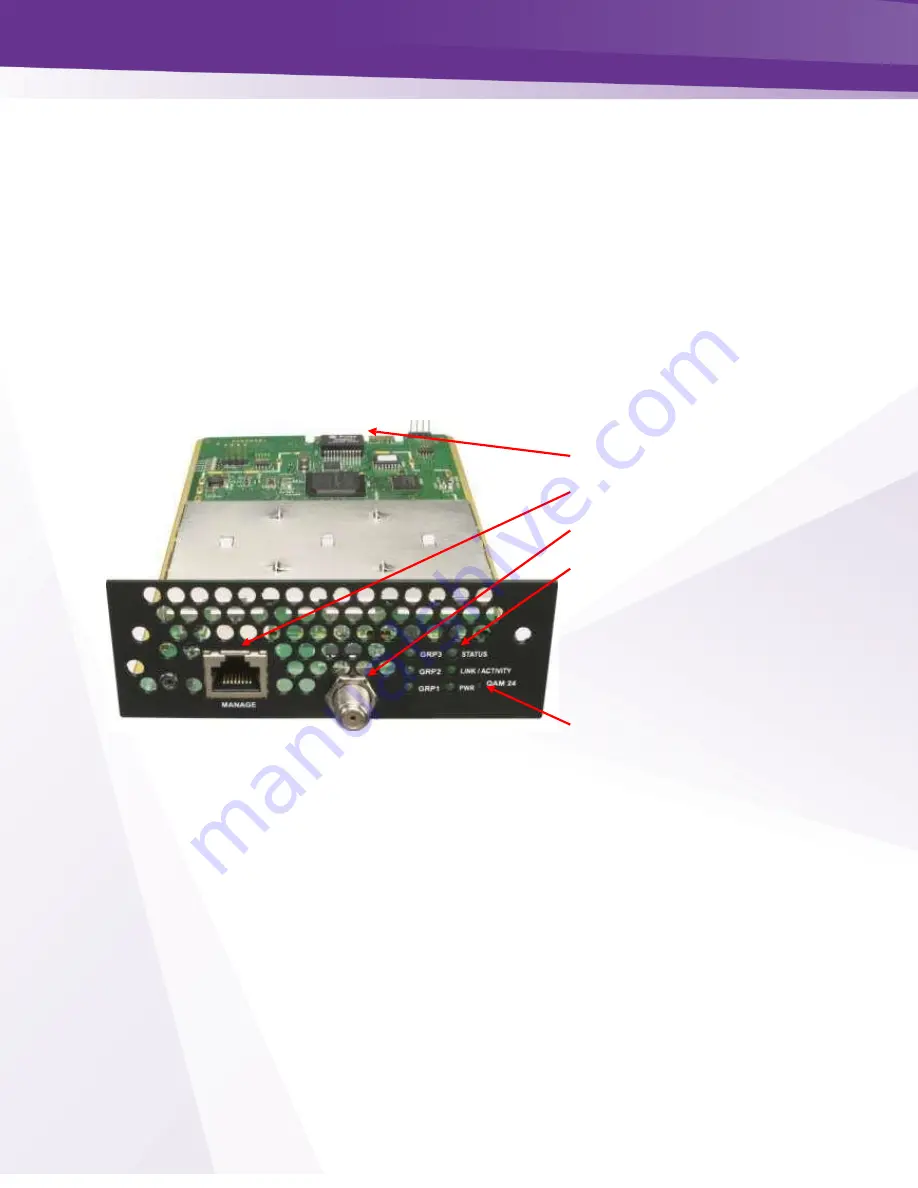
w w w . t e c h n i c o l o r . c o m / m c s
Page 21
4.4
QAM6 Overview
The QAM6 card is an Edge QAM that can be installed directly into a COM360 chassis. It
connects to the COM46 cards via a GigE connection on the back edge of the card. The board
provides 12 QAM modulators in addition to the front 100mbps Ethernet port, which can be used to
manage the COM2000 system. Each QAM channel can carry up to 3 HD or 8 SD DIRECTV
video channels. A COM360 chassis fully populated with COM46 receivers (48 HD channels total)
requires 16 QAM channels (3 HD channels per QAM). This requires 2 QAM6 modulators (12
QAMS) plus 2 additional SWQAM2 upgrade licenses. Additional SWQAM2 upgrades can be
purchased for a maximum of 24 QAM channels. These can be utilized for additional services such
as ATSC-8, or externally sourced video streams. The QAM6 can be seen in Figure 6 below.
Figure 6 - QAM6 Card
The QAM6 outputs three unique channel-grouping of four channels each according to the EIA
North American Cable Television Frequency Plan (see EIA-542B) from the front RF connector.
The four channels within each channel-grouping must be adjacent to one another and within the
same band. Refer to a CATV frequency chart if you are not sure. It is recommended practice to
start the first QAM on ch 23. This reduces the possibility of ingress from VHF high band
broadcast channels and keeps the lineup out of frequencies shared with aeronautical
communications.
The QAM6 card contains six (6) green LEDs on its front panel that indicate power, Gigabit
Ethernet Link/ Activity, and QAM status, as well as the link-status for each channel group.
The QAM6 card’s bottom-right LED represents the board’s power (PWR) state, lighting up once
all on-board power regulators report the “good” state, and going dark when power is removed
from the chassis or when a problem is detected on one of the regulators.
Card Edge Connector
Ethernet Port
RF Output
LEDs
Reset Button
















































